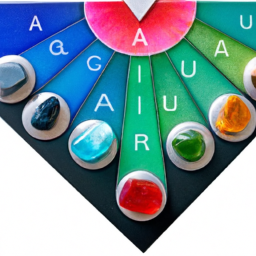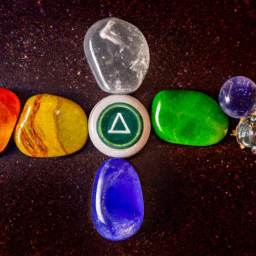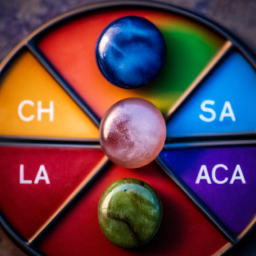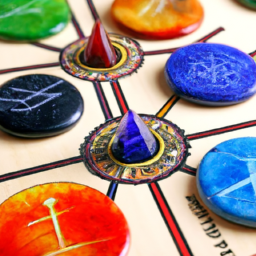Chakras are energetic centers located in our bodies that are believed to be responsible for our physical, emotional, and spiritual well-being. When these chakras are blocked or unbalanced, it can result in various physical and psychological issues. Therefore, learning how to balance and maintain healthy chakras is essential for a happy and healthy life. In this article, we will discuss the basics of chakras and simple techniques for beginners to balance them.
Understanding the Chakras
There are seven major chakras in our body, starting from the base of the spine to the crown of the head. Each chakra is associated with a specific color, element, and purpose. They work together to form a complete energy system, and each chakra has a different impact on our physical, emotional, and spiritual well-being. It is essential to understand the purpose of each chakra before proceeding with the balancing techniques.
-
Root Chakra (Muladhara)
Located at the base of the spine, the root chakra is associated with the color red and the element of earth. It is responsible for providing a sense of security, stability, and survival. A balanced root chakra allows us to feel grounded and secure in our lives.
-
Sacral Chakra (Svadhishthana)
The sacral chakra is located just below the navel and is associated with the color orange and the element of water. It is connected to our emotions, creativity, and sexuality. A balanced sacral chakra allows us to express our emotions freely and indulge in healthy intimate relationships.
-
Solar Plexus Chakra (Manipura)
Located in the upper abdomen, the solar plexus chakra is associated with the color yellow and the element of fire. It is responsible for our confidence, willpower, and self-esteem. A balanced solar plexus chakra enables us to have a strong sense of self and make decisions with clarity and confidence.
-
Heart Chakra (Anahata)
As the name suggests, the heart chakra is located in the center of the chest and is associated with the color green and the element of air. It controls our ability to love and have compassion for others. A balanced heart chakra helps us form healthy relationships and connect with others.
-
Throat Chakra (Vishuddha)
The throat chakra is located in the throat and is associated with the color blue and the element of sound. It governs our communication, self-expression, and creativity. A balanced throat chakra helps us speak our truth and communicate effectively.
-
Third Eye Chakra (Ajna)
Located in the center of the forehead, the third eye chakra is associated with the color indigo and the element of light. It is responsible for our intuition, imagination, and perception. A balanced third eye chakra helps us tap into our inner wisdom and have a deeper understanding of ourselves and the world around us.
-
Crown Chakra (Sahasrara)
Lastly, the crown chakra is situated at the top of the head and is associated with the color violet and the element of thought. It connects us to our spirituality and higher self. A balanced crown chakra allows us to feel a sense of oneness and enlightenment.
Balancing Techniques for Beginners
Now that we have a basic understanding of the chakras, we can move on to simple techniques for balancing them. These techniques are easy to practice and can be incorporated into your daily routine.
1. Meditation
Meditation is the key to balancing chakras. It helps us relax our mind and body, allowing the energy to flow freely through our chakras. Choose a quiet and comfortable place to sit and focus on your breathing. As you inhale, imagine the energy entering your body, and as you exhale, visualize it moving through each chakra, starting from the root to the crown. You can also chant the mantra “Om” while meditating to help balance all the chakras.
2. Yoga
Practicing yoga asanas that target specific chakras is another great way to balance them. For example, poses like Malasana (squatting pose) and Virabhadrasana (warrior pose) help balance the root chakra, while Bhujangasana (cobra pose) and Dhanurasana (bow pose) work on the heart chakra. Research and incorporate poses that target your specific chakra imbalances.
3. Essential Oils
Each chakra is also associated with a particular essential oil that helps in balancing it. For the root chakra, you can use patchouli or cedarwood oil, while jasmine or sandalwood oil is beneficial for the sacral chakra. You can apply the essential oil directly on your skin or use a diffuser to disperse the aroma in the room.
4. Crystal Healing
Crystals are known to have healing properties, and each crystal is associated with a specific chakra. For example, amethyst is linked to the third eye chakra, while rose quartz works on the heart chakra. You can wear these crystals as jewelry or place them on the corresponding chakra during meditation.
Conclusion
Balancing chakras is an ongoing practice that requires patience and consistency. As a beginner, start with the basics and slowly incorporate different techniques into your routine. It is essential to pay attention to your body and emotions to identify any imbalances in your chakras. With regular practice, you will be able to maintain balanced and healthy chakras, leading to a happier and more harmonious life.





Great article!
SandraSummers: Useful tips
Great post! I’m excited to learn more about chakra balancing.